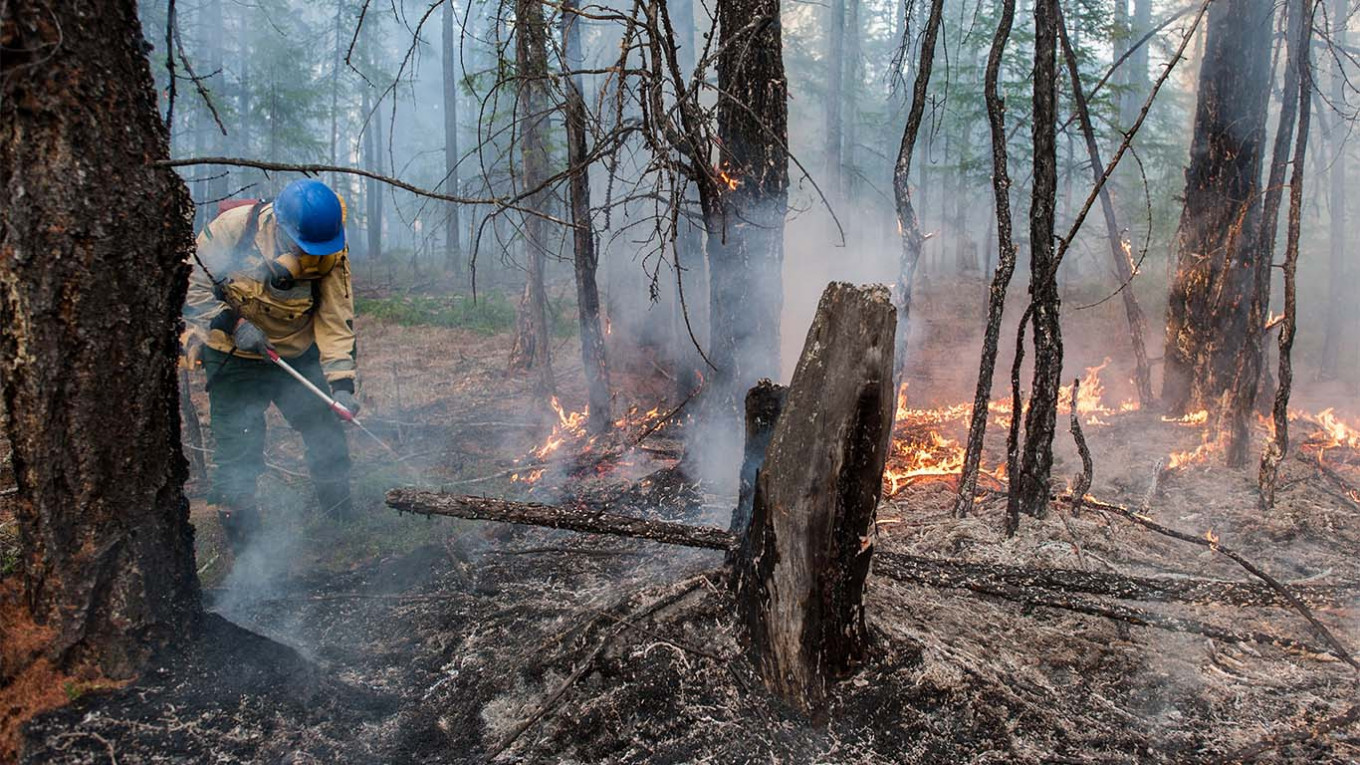
Record-setting wildfires in far northeastern Russia in 2020 are linked to extreme weather changes in the warming Arctic, a report by the National Oceanic and Atmospheric Administration (NOAA) said Tuesday.
Uncontrolled forest fires within the Arctic Circle have set records this year for both their cumulative number and the amount of CO2 emissions. The extent of June 2020 snow cover in the Eurasian Arctic was the lowest level recorded in the 54 years since satellite records began, while September 2020 extent of sea ice was the second-lowest in 42 years, the report said.
“The extreme wildfires in 2020 in Sakha Republic offer another example of the impact of the extreme warm spring and summer air temperatures in the Eurasian Arctic,” the NOAA Arctic Report Card said.
Temperature trends over the past four decades show that “conditions are becoming more favorable for fire growth, with more intense burning, more fire growth episodes and greater consumption of fuels.”
Climate scientists have attributed wildfires to a combination of unusually warm weather in vast parts of Siberia and dry soil.
NOAA Arctic Report Card contributors described the Arctic ecosystem to the Associated Press as an integrated system with cascading effects.
“Changes in the Arctic climate are important because the Arctic acts as a refrigerator for the rest of the world,” AP quoted Environment and Climate Change Canada scientist Lawrence Mudryk as saying.
“It helps cool the planet.”
The Arctic, which has seen the second-warmest temperatures on record the past year, is warming at more than twice the global average.
Russia, the world’s fourth-largest greenhouse gas emitter whose economy heavily depends on oil and gas, has been slow to take steps to reduce its carbon emissions.
